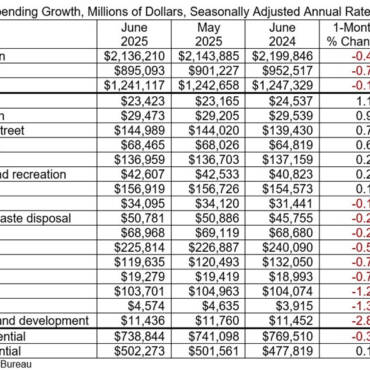Trimble has released its 2026 Industry Outlook, diving deep into the latest construction technology trends sure to gain traction. Key insights include:
Artificial intelligence usage deepens
As the industry deepens its use of artificial intelligence, there will be a significant rise in the adoption of agentic AI systems — systems that can utilize GenAI and automate end-to-end processes. These systems will observe their surroundings, plan actions, reason, make decisions and refine their strategies over time. In 2026, isolated pilots will move beyond experimentation to impact real-world workflows. Networks of AI agents will operate across design, engineering and construction in connected ecosystems — streamlining design processes, orchestrating schedules, resolving conflicts, tracking progress managing resources and more. This underscores the critical role of data interoperability, enabling seamless connection and data sharing across systems.
Technology, training will be key to attracting the next generation workforce
According to numerous estimates, the construction industry will need to attract nearly half a million new workers in 2026 alone just to keep up with anticipated demand. The growing workforce shortage threatens project timelines, costs, quality, and overall industry growth. With nearly a quarter of the construction workforce set to retire in the next decade, the need to bring in younger workers has never been more urgent. Contractors that invest and deploy the latest technology will have a competitive advantage, by optimizing employee productivity and being able to do more with less.
Adoption of subscription model will continue to grow
In 2026, the construction hardware and software subscription model is expected to see significant maturation, with a focus on more refined and comprehensive programs. These subscription services will offer increased flexibility and scalability, allowing contractors to customize offerings to their specific needs while benefiting from lower upfront costs and more predictable ongoing expenses. Providers will continue to enhance cloud-based solutions, offering more robust cybersecurity and ensuring automatic access to the latest technological advancements.
Reality capture technology will become more democratized
Reality capture technology is already invaluable for precision, safety and speed, but will become even more democratized in 2026. New user-friendly tools will enable even more comprehensive data collection and in-field treatment for faster and improved decision making, as well as capture from mobile phones and robust mobile mapping systems.
Evolution of task automation, autonomous machines continues
The path to autonomy in construction is an evolution more than a revolution, and that evolution will continue in 2026. Continued advancements across the industry are expected and will create the foundation to a future in which tasks and machines are more automated. Part of that foundation includes greater interoperability between machine types and technology providers, both of which should see forward movement in the coming year. Connected, cloud-based ecosystems remain important for sharing and leveraging data for increasingly automated tasks, workflows and machines.
Data integration/interoperability efforts will accelerate
The complexity of modern construction projects makes it challenging to share data across diverse projects and teams, as stakeholders often rely on different technology stacks. Interoperability—the ability for data to flow seamlessly between software systems—ensures every stakeholder can access the same information within their preferred tools. In the year ahead, construction technology vendors are expected to accelerate efforts to enhance interoperability, delivering greater value to contractors.
Purchasing, operability advances will extend cutting-edge technology to smaller contractors
While advanced, integrated technology is becoming more vital to competitiveness, barriers to entry are falling, and adoption by small and mid-size contractors will accelerate. The proliferation of subscription and SaaS options for both hardware and software will reduce upfront costs. Ongoing improvements in operability and user interfaces will further minimize the in-house IT expertise and support required for implementation, training and optimization of technology.
Visualization and 3D models/BIM for improved collaboration
Advances in collaboration tools and common data environments are transforming how projects are designed, built and operated. Increasingly, design conversations will take place directly within 3D models, enabling quicker iterations, faster workflows and stronger alignment throughout design and construction. As discussions are centralized, designers and other stakeholders can provide context, resolve questions and make decisions in real time.
Whether you require installation, repair, or maintenance, our technicians will assist you with top-quality service at any time of the day or night. Take comfort in knowing your indoor air quality is the best it can be with MOE heating & cooling services Ontario's solution for heating, air conditioning, and ventilation that’s cooler than the rest.
Contact us to schedule a visit. Our qualified team of technicians, are always ready to help you and guide you for heating and cooling issues. Weather you want to replace an old furnace or install a brand new air conditioner, we are here to help you. Our main office is at Kitchener but we can service most of Ontario's cities
Source link



